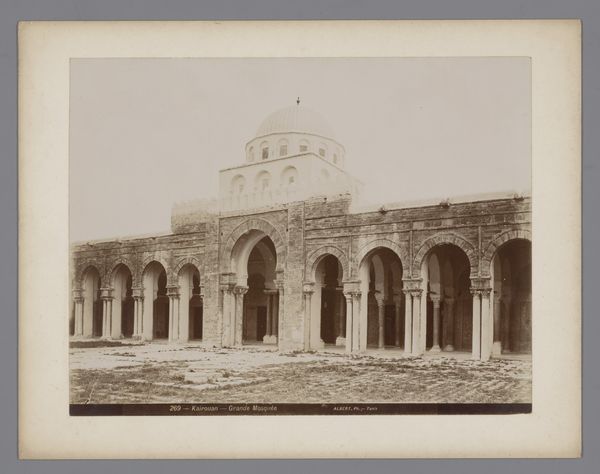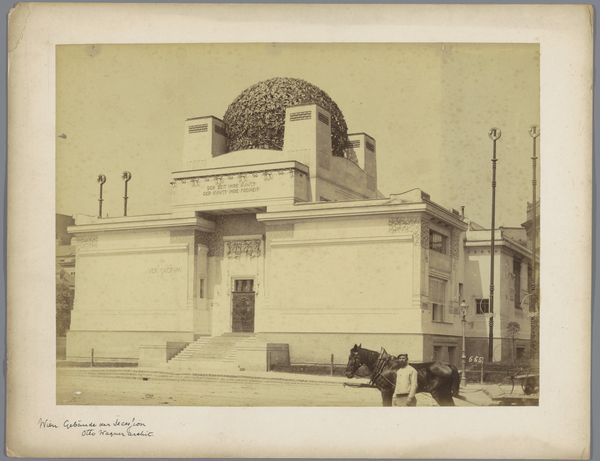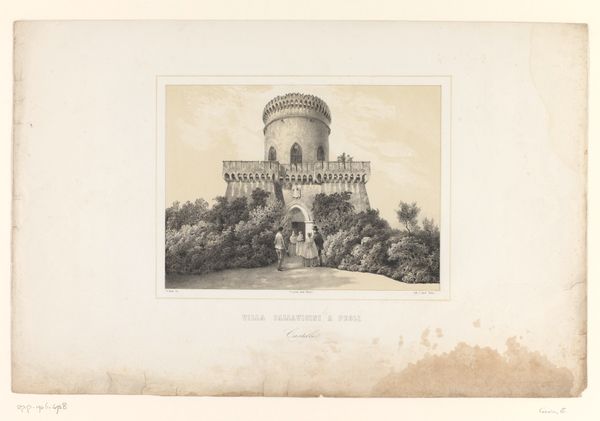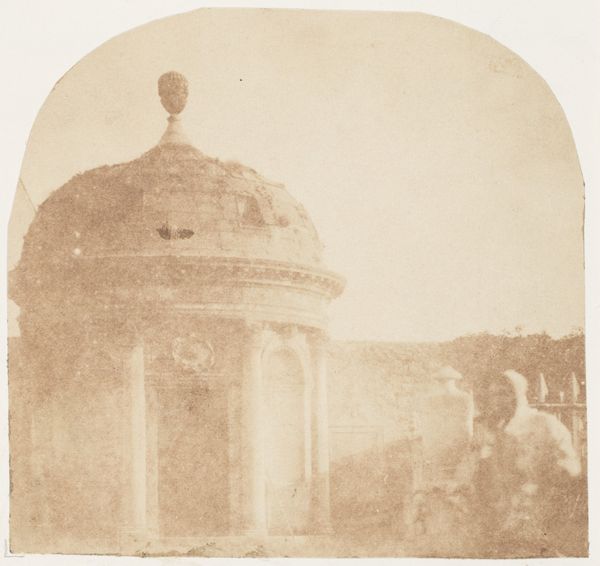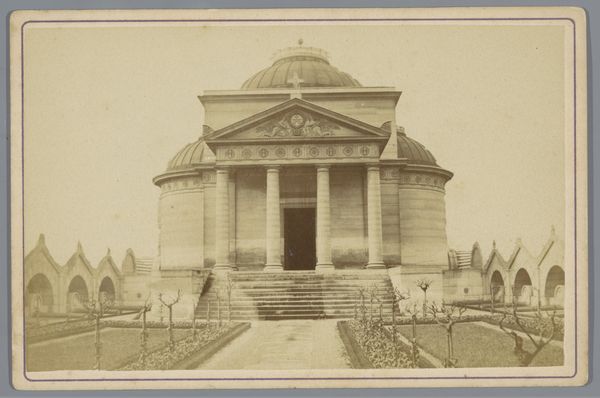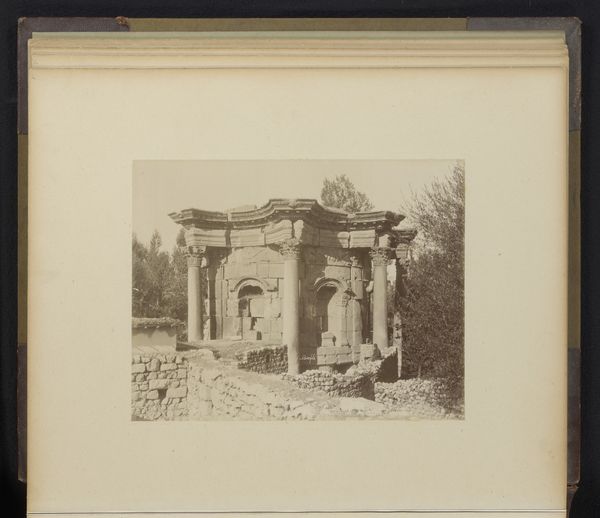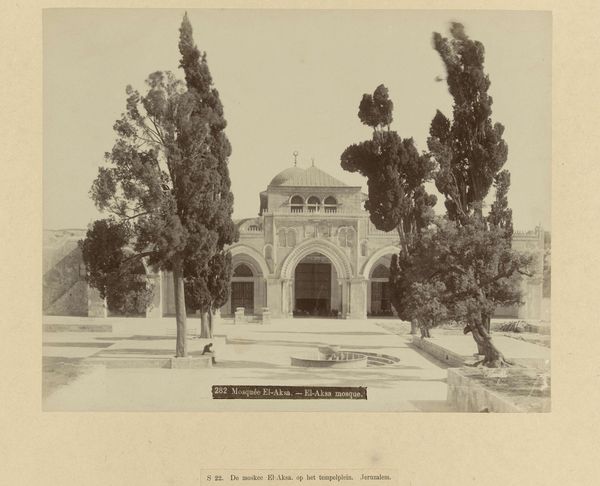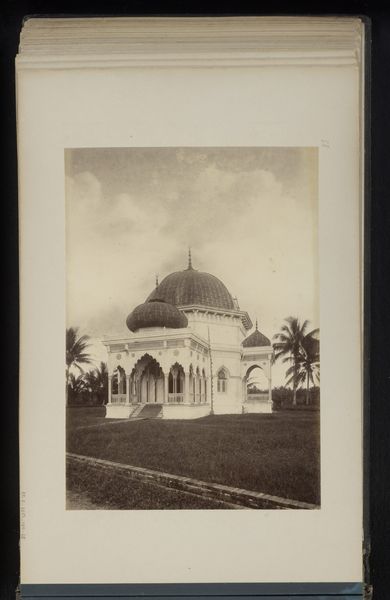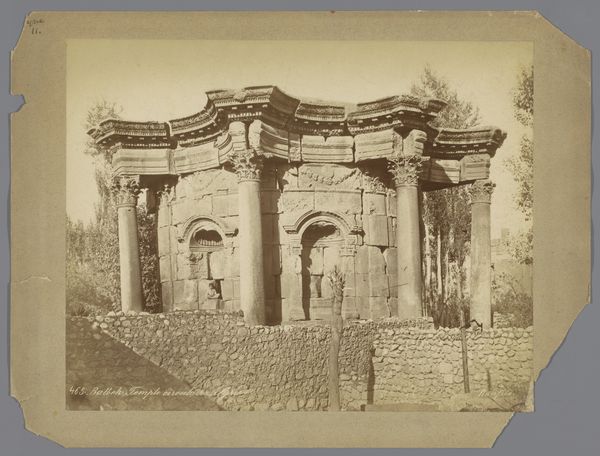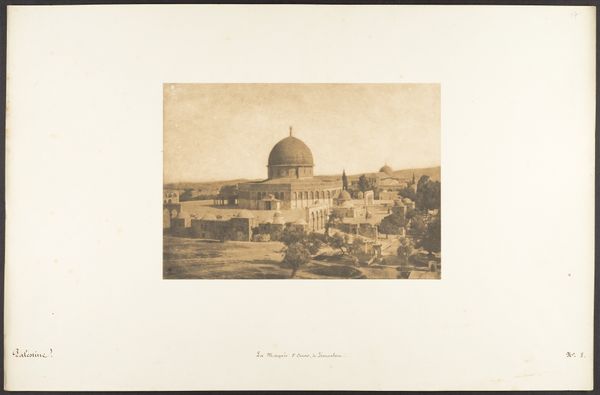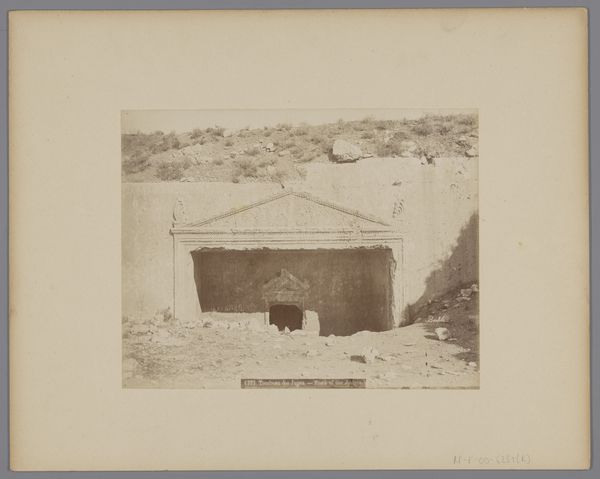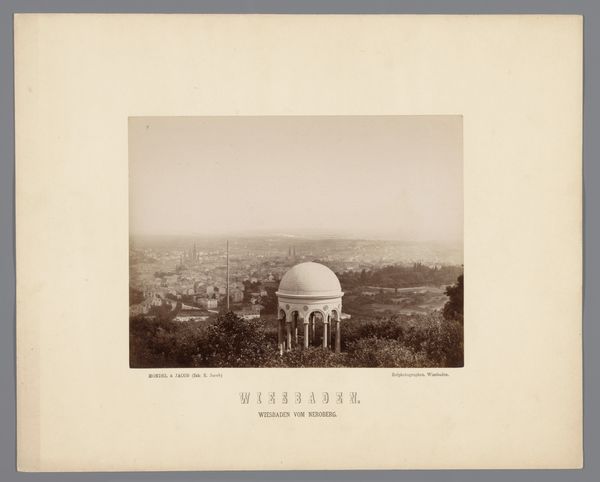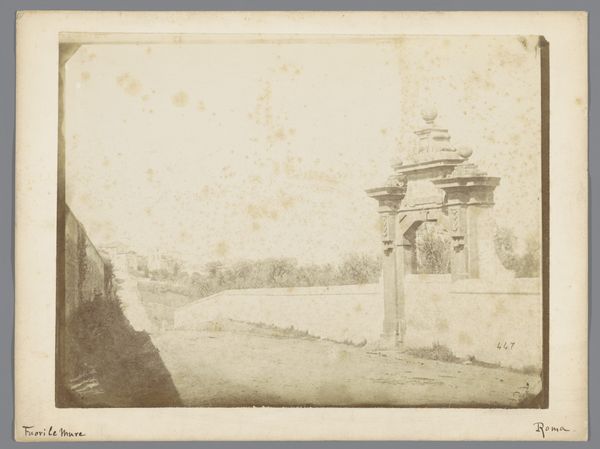
print, photography, architecture
# print
#
landscape
#
photography
#
islamic-art
#
architecture
#
realism
Dimensions: height 219 mm, width 277 mm
Copyright: Rijks Museum: Open Domain
This photograph, "Koepel van de Hemelvaart op de Tempelberg in Jeruzalem," was captured by Félix Bonfils, using the wet collodion process, a relatively new technology in the 19th century. The materiality of the photographic process itself is crucial here. The glass plate negative, the silver salts, the darkroom – all these elements combine to produce an image that is both indexical and mediated. This is not just a record of a place, but the result of a complex industrial process. The sepia tones, the soft focus, and the way the light catches on the stone, are all effects of the materials and techniques involved. Bonfils was part of a wave of photographers who traveled the world, documenting its wonders for a European audience eager for visual knowledge of faraway places. This image, therefore, speaks to the growing appetite for photography as document, souvenir, and commodity. It’s a reminder that even the most seemingly objective images are shaped by the materials, labor, and social context in which they are made.
Comments
No comments
Be the first to comment and join the conversation on the ultimate creative platform.
